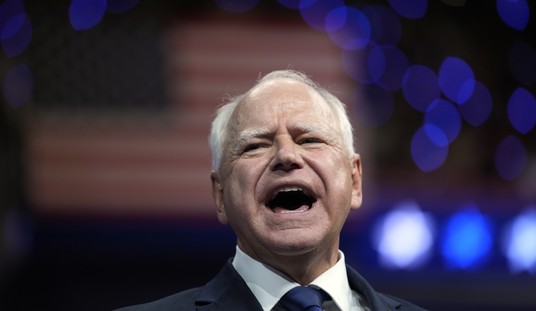Former Indiana Gov. Mitch Daniels, upon passing on a run for the Republican nomination in 2012, took an interesting career turn. The famously fiscally conservative executive, who devised savings for the Hoosier state on everything from ??? to paper clips, became the head of Purdue University. Since then, Daniels has endured the predictable run-ins with his liberal faculty—over criticism of Howard Zinn’s American history— but also made real progress in the fight against rising college costs by harnessing some free-market incentives for academia.
The university is now in its fourth year of a tuition freeze after more than 30 yearly increases before that, Daniels started an experimental partnership with Amazon for text books, and he even appeared in a viral music video by engineering students in 2013. Daniels’ career change often strikes me as such an exciting illustration of conservative principles. This public servant got out of electoral politics and got to work. It’s not as if he didn’t achieve anything while in office—he did!— but making Purdue a model of a new kind of university, and doing it without requiring brand-new federal programs and leadership at every turn, I’d argue is more valuable to the country than a bunch of politicians continually complaining about college costs.
Now, Daniels is pioneering another experiment, in which private investors would foot the bill for a college student’s degree based on the potential they see in the student and his/her line of study. The student would agree to terms of return on that investment, usually in the form of a percentage of their income post-college. Investors would be making bets on the future earning potential of these students. There’s a lot to like, here. First, a move away from the giant bubble of student loan financing. Second, market signaling about what majors are good investments. You might have, for instance, more students incentivized to choose business, accounting, or engineering degrees than French literature and puppetry. On the other hand, because this is a private system, quirky investors who are happy to take on a loss leader like puppetry majors as a passion project might be willing to throw money at that while making money on some other students with different majors. Watchdog.org reports:
Beginning in 2016, University President Mitch Daniels wants to allow private investors to invest in the success of Purdue students using a new financial model: Income Share Agreements (ISA).
ISAs allow private investors to buy shares of a student’s future income for a fixed period of time in exchange for covering the cost of tuition – an idea that has the potential revolutionize the student loan industry. This idea is not new.
Economist Milton Friedman first proposed the concept in 1954, likening the model to an equity investment where investors could buy shares in an individual’s earning prospects in exchange for funding their training. Lenders would profit from successful individuals whose payments exceeded the amount paid for their tuition. This would balance out failed investments and keep the lender compensated. Because there is no principal balance or interest, payments adjust with the student’s income over the life of the contract at a fixed rate that makes them equally affordable throughout.
Students today are graduating from college with more loan debt than at any other point in the history of the United States. 43 million indebted students, as well as their families, are now shouldered with a financial burden approaching $1.2 trillion – $1 trillion of which is comprised of federal student loans, with the total averaging roughly $27,000 per student. Many are struggling to pay back expensive loans taken out for low-paying college degrees, and some worry the debt may not be payable at all.
All of this money, of course, would change hands in mutually agreeable exchanges by free people. So, naturally, some people have a problem like this. Why be beholden to fellow Americans when you can be beholden to the federal government and banks? Being invested in is “indentured servitude” whereas living with debts to the government and banks is a noble ride indeed.
A California start-up battled the regulation morass that prevents this kind of experimentation, but failed, because it made the fatal mistake of starting up in…California:
Upstart, a startup lender based in California, recently attempted to offer ISAs to their customers but were forced to suspend the service, citing regulatory obstacles. Fortunately, legislators from Indiana are pushing a bill in Congress intended to resolve these issues and pave the way for the widespread adoption of ISAs.
I love the distinction Daniels makes between loans and investments in his Chicago Tribune column. In an investment situation, it’s the investor who is taking a risk on the young person. If the investment doesn’t pan out, it’s the older, richer, more experienced half of the relationship that takes the hit, and investors are used to making that kind of calculation. In a loan situation, if a student’s career doesn’t pan out (or, in the more likely scenario, my Millenial brethren took on debt without ever thinking of how they might pay it off), it is the young, still-poor and inexperienced student taking the hit. Daniels explains how this relationship works, with a welcome jab at the propensity of college students to dawdle in pre-adulthood pre-workforce post-college:
Into this dismal picture a glimmer of a better idea has appeared. Income-share agreements, under which a student contracts to pay investors a fixed percentage of his or her earnings for an agreed number of years after graduation, offer a constructive addition to today’s government loan programs and perhaps the only option for students and families who have low credit ratings and extra financial need. ISAs are neither a new nor untried idea. Milton Friedman proposed them more than a half-century ago, and there is a market for them today in Colombia, Mexico, Chile and other Latin American countries.
From the student’s standpoint, ISAs assure a manageable payback amount, never more than the agreed portion of their incomes. Although every provider is different, terms tend to range from 5 percent to 10 percent of income for 10 to 15 years, or somewhat higher (10 percent to 15 percent for shorter contracts such as five to seven years). Best of all, they shift the risk of career shortcomings from student to investor: If the graduate earns less than expected, it is the investors who are disappointed; if the student decides to go off to find himself in Nepal instead of working, the loss is entirely on the funding providers, who will presumably price that risk accordingly when offering their terms. This is true “debt-free” college.
An investment system of this sort, like any other, will not be without its failures. There will be bad investments and bad investors, as there are in any human endeavor. But this system has the potential to be more efficient, more cost-effective, and is already more creative than anything in Hillary Clinton’s dismal, expensive plan.
Here’s to conservatives who, when it comes to education, are very cool with trying new things.








Join the conversation as a VIP Member